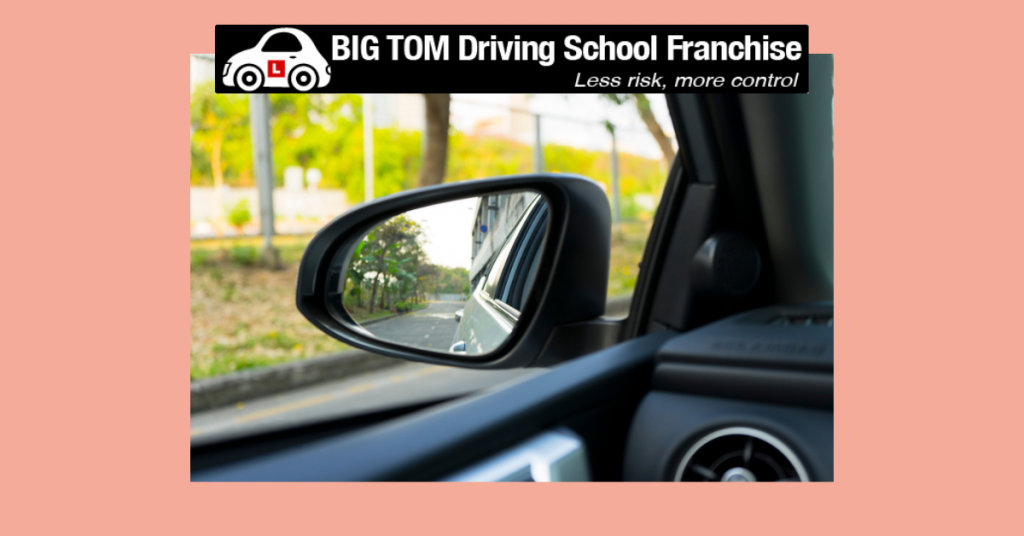Rising Costs to Driving Instructors
2nd February 2023Driving Instructor for Beginners 1
25th March 2023Tell me what you see in the mirror
Helping our pupils to effectively look in their mirrors takes a bit of practice – here is a tip to help them

Pupils will often say to driving instructors that they have been told to turn their head on a driving test, so that the examiner sees they are checking their side mirror. This is a commonly held belief but entirely incorrect in terms of the motivation for turning the head.
When your pupil is parked up at the side of the road with the engine off, ask them to tell you what they see in the left side mirror without turning their head. They are going to struggle with that. If they wear glasses, their eyes won’t even be looking out of the lenses of the glasses. Now ask them to turn their head to the left and repeat your request. They will give you specific things that they can see, and they will also normally say how much more comfortable it is.
By turning the head, they will also be increasing the range of what they can see in the peripheral vision – again this is easily demonstrated just by asking your pupil to focus straight ahead while telling you what they can see in their peripheral vision to the left or right. Now ask them to turn their head 90 degrees and repeat what they can see in their peripheral vision.
Once you get this understanding with your pupil, they are likely to be far more willing to turn their head for effective observations while they drive. Admittedly, they may be reluctant in the early days to take their eyes off the road ahead, so as a driving instructor, you will have to take care with your timing of this drill, but when they feel safe, this will be very beneficial.
So this simple technique will positively demonstrate to a pupil, how much more effective observations can be when they turn their head – it is the difference between looking versus seeing. You can look at a mirror, but what in fact can you actually see?
If we try to incorporate this drill too early, it can make the pupil feel quite unsafe by taking their eyes off the road, but also if they make the most fleeting of glances to a side mirror (even with a head turn), it is unlikely their eyes will have had the chance to see much detail. There are certain times of driving when safety is maintained because of very effective observations – merging onto a dual carriageway is one such example, driving in the dark would be another, and turning right at a junction would be a third.
Once you have invested the time to help a pupil understand why effective observations are necessary and crucially help them to develop the skill of how to do those observations, then in general terms they will be far more likely to do them.
It then begs the question what do we do when a pupil refuses to look in mirrors? Well you could always bring to their attention the Top 10 reasons for failing a driving test
You can show them how “observations” at junctions and “mirrors” change direction so often feature in the top 3 from 2007 – 2022. Then again, if a pupil refuses to believe your words, perhaps you could take the time to show them the DVSA advice in DES. Anything that you can do to demonstrate that this advice you are giving isn’t just fictional but is based on fact might help.
Otherwise, if you have dashcam capability, then with the pupil’s consent you could record them driving and play it back to them – that can be very neat feedback as they will see it for themselves rather than having to rely on your feedback. This can be a very effective technique to use on a pupil who forthrightly denies not doing mirror checks.
And as ever, we always have up our sleeves a demonstration – a highly underused technique. Just show your pupils 10 minutes of you driving and the observations you make, how and when. Play a bit of role-play where you deliberately miss out on one specific observation and see if they can spot which one it is – a fun way for the pupil to enjoy telling the driving instructor off.
